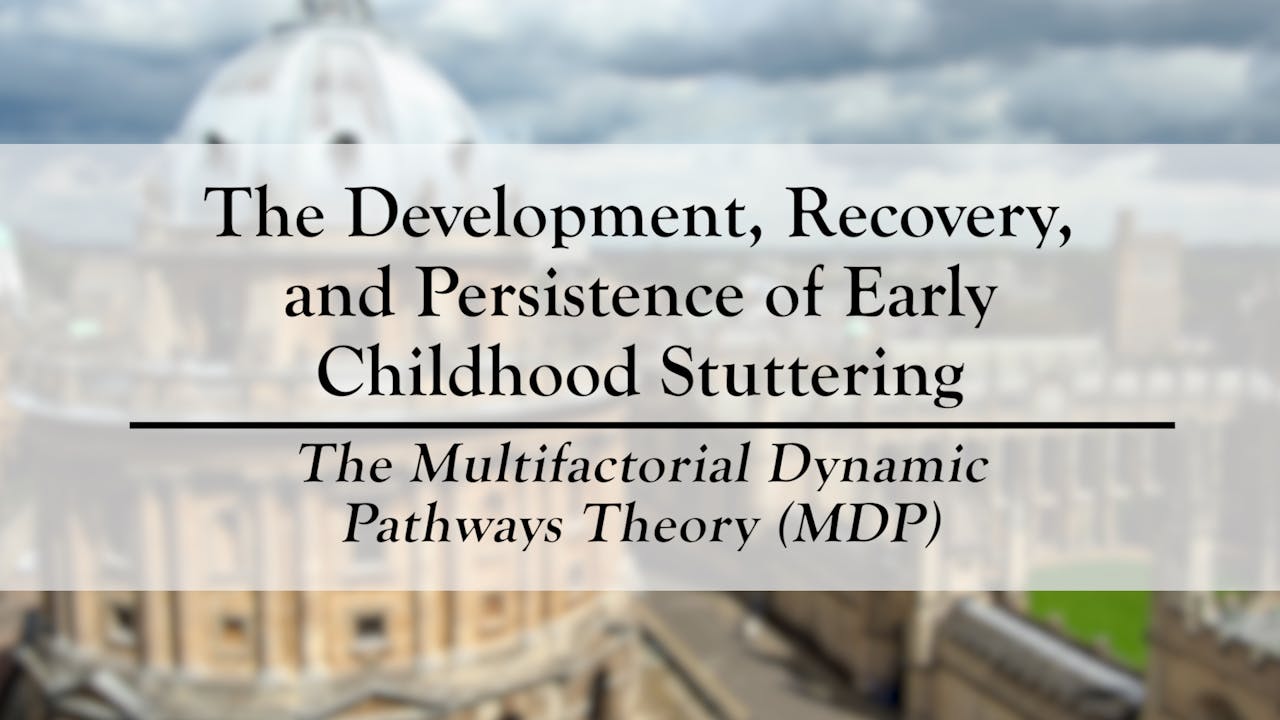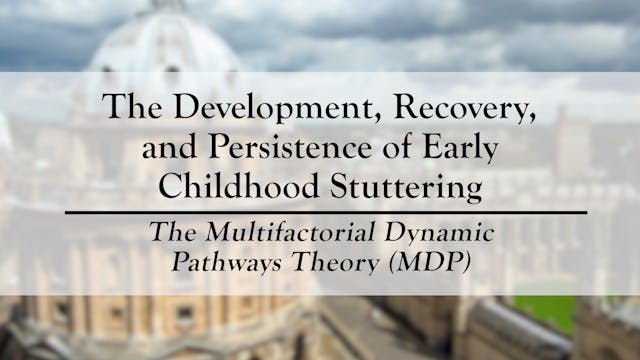The Development, Recovery & Persistence of Childhood Stuttering: The MDP Theory
Dr. Christine Weber writes, “Stuttering, or Childhood Onset Fluency Disorder (DSM-5), is a neurodevelopmental disorder that begins when neural networks supporting speech, language, and emotional functions are displaying rapid development. How does stuttering develop, and what factors influence the recovery or persistence of stuttering? The Multifactorial Dynamic Pathways (MDP) theory of stuttering emphasizes the dynamic developmental context in which stuttering emerges and follows its progression throughout early childhood. It takes into account evidence from neural development to address how stuttering arises, including genetic/epigenetic factors, motor, language, and emotional features. Evidence from our multi-factor experimental approach in young children who stutter supports our earlier assertion that while stuttering ultimately reflects differences in speech sensorimotor processes, its course over the life span is strongly influenced by language and emotional factors. Around the time of onset of stuttering, steep maturational changes in many neurobehavioral systems are ongoing, and critical interactions among these systems likely play a major role in determining persistence of or recovery from stuttering. From longitudinal evidence, we present findings that children who go on to persist in stuttering exhibit subtle maturational delays in speech-motor control and some aspects of language processing, and display more stuttering-like disfluencies (SLDs). In contrast, the preschool children who would eventually recover already showed signs of more stable speech motor control, greater maturity in some of their language processing systems, and less severe stuttering at that age. The MDP theory encourages experimental and clinical approaches that will help to determine the specific factors that contribute to each child’s pathway to the diagnosis of stuttering and those factors most likely to promote recovery. The implications of the MDP for early, comprehensive and tailored treatments for enhancing the pathways for recovery from stuttering will be discussed. This work is from the Purdue Stuttering Project which was supported by a grant from the NIH’s National Institute on Deafness and Other Communicative Disorders, DC00559.”
-
Development, Recovery & Persistence of Childhood Stuttering: The MDP Theory
Dr. Christine Weber writes, “Stuttering, or Childhood Onset Fluency Disorder (DSM-5), is a neurodevelopmental disorder that begins when neural networks supporting speech, language, and emotional functions are displaying rapid development. How does stuttering develop, and what factors influence th...

